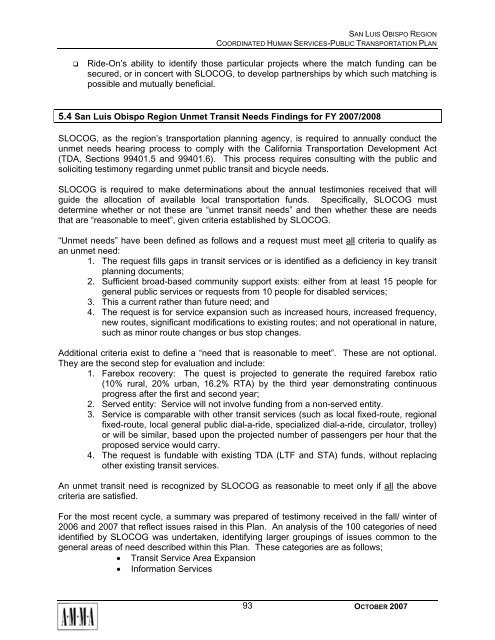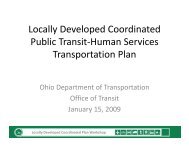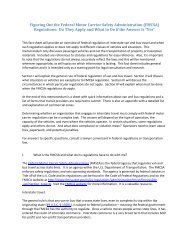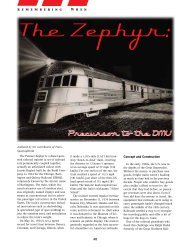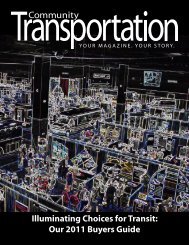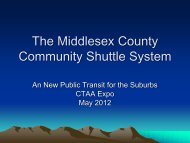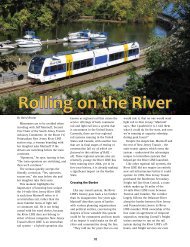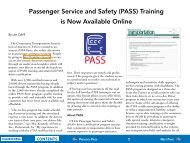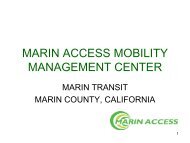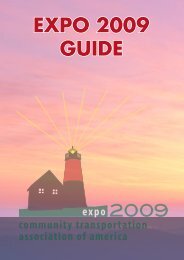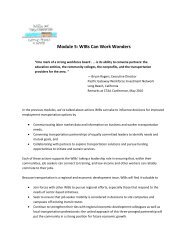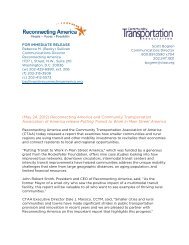San Luis Obispo - Caltrans - State of California
San Luis Obispo - Caltrans - State of California
San Luis Obispo - Caltrans - State of California
Create successful ePaper yourself
Turn your PDF publications into a flip-book with our unique Google optimized e-Paper software.
SAN LUIS OBISPO REGION<br />
COORDINATED HUMAN SERVICES-PUBLIC TRANSPORTATION PLAN<br />
<br />
Ride-On’s ability to identify those particular projects where the match funding can be<br />
secured, or in concert with SLOCOG, to develop partnerships by which such matching is<br />
possible and mutually beneficial.<br />
5.4 <strong>San</strong> <strong>Luis</strong> <strong>Obispo</strong> Region Unmet Transit Needs Findings for FY 2007/2008<br />
SLOCOG, as the region’s transportation planning agency, is required to annually conduct the<br />
unmet needs hearing process to comply with the <strong>California</strong> Transportation Development Act<br />
(TDA, Sections 99401.5 and 99401.6). This process requires consulting with the public and<br />
soliciting testimony regarding unmet public transit and bicycle needs.<br />
SLOCOG is required to make determinations about the annual testimonies received that will<br />
guide the allocation <strong>of</strong> available local transportation funds. Specifically, SLOCOG must<br />
determine whether or not these are “unmet transit needs” and then whether these are needs<br />
that are “reasonable to meet”, given criteria established by SLOCOG.<br />
“Unmet needs” have been defined as follows and a request must meet all criteria to qualify as<br />
an unmet need:<br />
1. The request fills gaps in transit services or is identified as a deficiency in key transit<br />
planning documents;<br />
2. Sufficient broad-based community support exists: either from at least 15 people for<br />
general public services or requests from 10 people for disabled services;<br />
3. This a current rather than future need; and<br />
4. The request is for service expansion such as increased hours, increased frequency,<br />
new routes, significant modifications to existing routes; and not operational in nature,<br />
such as minor route changes or bus stop changes.<br />
Additional criteria exist to define a “need that is reasonable to meet”. These are not optional.<br />
They are the second step for evaluation and include:<br />
1. Farebox recovery: The quest is projected to generate the required farebox ratio<br />
(10% rural, 20% urban, 16.2% RTA) by the third year demonstrating continuous<br />
progress after the first and second year;<br />
2. Served entity: Service will not involve funding from a non-served entity.<br />
3. Service is comparable with other transit services (such as local fixed-route, regional<br />
fixed-route, local general public dial-a-ride, specialized dial-a-ride, circulator, trolley)<br />
or will be similar, based upon the projected number <strong>of</strong> passengers per hour that the<br />
proposed service would carry.<br />
4. The request is fundable with existing TDA (LTF and STA) funds, without replacing<br />
other existing transit services.<br />
An unmet transit need is recognized by SLOCOG as reasonable to meet only if all the above<br />
criteria are satisfied.<br />
For the most recent cycle, a summary was prepared <strong>of</strong> testimony received in the fall/ winter <strong>of</strong><br />
2006 and 2007 that reflect issues raised in this Plan. An analysis <strong>of</strong> the 100 categories <strong>of</strong> need<br />
identified by SLOCOG was undertaken, identifying larger groupings <strong>of</strong> issues common to the<br />
general areas <strong>of</strong> need described within this Plan. These categories are as follows;<br />
• Transit Service Area Expansion<br />
• Information Services<br />
93<br />
OCTOBER 2007


